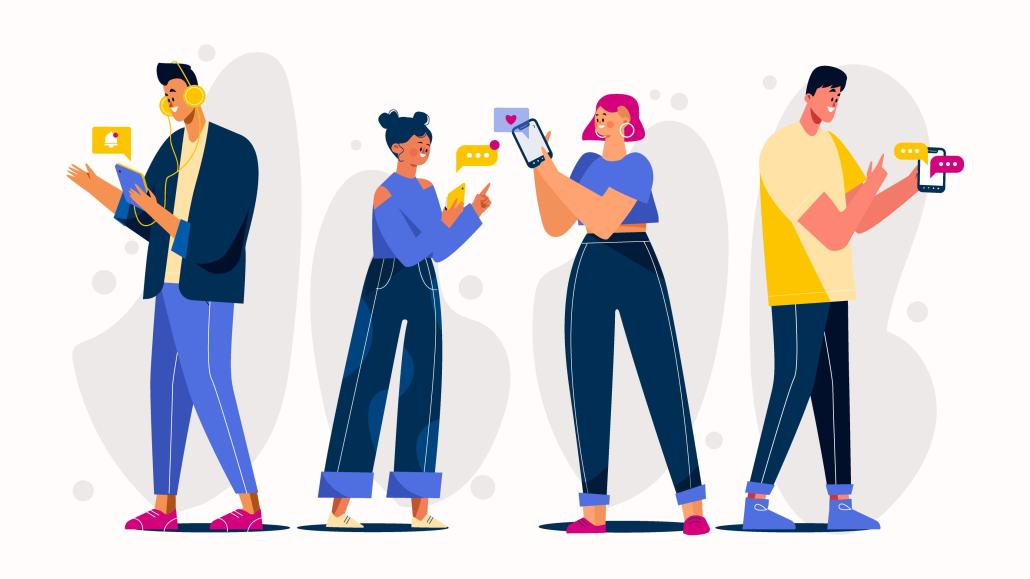Mobile app advertising is unlocking digital-first audiences during a screentime surge

Jonathan Harrop, senior director, global marketing and communications, AdColony
In the summer of 1952, at the height of the polio outbreak in America — accounting for some 60,000 cases and 3,000 deaths — terrified parents kept their kids inside, away from other children.
Luckily, for 26 million households at that time, there was an explosion in the adoption of a screen: television. For those homebound kids, TV was a primary form of entertainment and their outlet to the outside world.
All those eyeballs did not go to waste for the Hassenfeld Brothers (Hasbro), owners of the Mr. Potato Head brand. Hasbro took advantage of that summer to pioneer the strategy of advertising directly to a younger audience that would love the toy, urging them to beg their parents to buy it for them. In other words, Hasbro invented the “nag factor,” which has stuck around as a marketing lesson and strategy ever since.
Fortunately, in 1955, Jonas Salk came up with his lifesaving vaccine and “polio summers” were no longer a thing. Fast forward to the present, when in 2020 it was not just kids who were homebound and glued to a screen — it was all of us. While the COVID-19 vaccine rollout this spring might mean that some things will go back to normal, the way we are now glued to our smartphone screens may not.
The reliance on digital channels is here to stay
Certainly, the increase in comfort level with fulfilling day-to-day needs from digital channels, from buying necessary items online to food delivery, is here to stay. Once people become comfortable with certain behaviors, they tend to stick with them.
Take at-home fitness, for example. More than half (55%) of consumers who tried online fitness programs and 65% who tried digital exercise machines said they will continue to use them, even after fitness centers and gyms reopen.
Another case in point is entertainment. App-based video streaming jumped 40% in 2020. While the long-form video giants contributed to that, it was actually the short-form, snackable video (à la YouTube) that really came out on top, with four to five times more daily hours than Netflix, Hulu, Amazon Prime and Twitch.
Mobile gaming was the other snackable form of entertainment greedily consumed in 2020. Globally, gaming app installs increased 45%, led by the hypercasual category. This indicates not only that people were looking for quick, instant and easy entertainment, but also that many of these downloads were from new users — beginner players trying mobile gaming for the first time, starting with the most accessible genres.
People who are new to experiences such as food and grocery delivery or at-home fitness will fuel this ongoing growth. As this freshman class of convenience-driven and entertainment-starved mobile users go deeper into 2021, they will not abandon their new habits.
Marketers have an opportunity with in-app engagement
Apps had a huge year, with more than 130 billion downloads (a 10% year-over-year increase) and record consumer spend of $112 billion. U.S. consumers now spend nearly four hours a day in apps, representing 90% of their total time.
The eyeballs are there and, in 2020, the brands that leaned into mobile apps benefited the most. Industries such as quick service restaurants and retail invested in their own apps, looking to reach and serve their customers with less friction and more personalization.
However, branded apps do not make sense for many organizations. Instead, brands looking to reach the mobile app audience — which is, in short, virtually everyone — can do so through mobile ad networks.
Rather than trying to go out and find their target audience on specific apps, marketing teams can build custom portfolios of apps that vertically fit their audience. The previous method of targeting by individual (IDFA) is no longer feasible at scale with the new privacy features of iOS 14.5, which means that contextual advertising is back in a big way. It is now about finding the right audience by their preferences versus their identity.
Innovative brand marketers have the opportunity to emulate what Hasbro did in 1952. To connect with the right consumers at scale, in the most popular entertainment channel, marketers need to leverage contextual buying within mobile apps.
More from Digiday

For platforms, here’s what’s not going to happen in 2026
Rather than the traditional platform predictions, this is a list of what Digiday believes won’t happen next year.

A timeline of the major deals between publishers and AI tech companies in 2025
Here’s a list of all the major deals signed between publishers and AI tech companies in 2025.

Cheez-It bets on ‘Prince Cheddward’ mascot in an overcrowded sports marketing arena
To cut through sports marketing noise, Cheez-It is resurrecting Prince Cheddward and betting on nostalgia.





